
 Mexican Jungle Wildlife in Riviera Nayarit
Mexican Jungle Wildlife in Riviera Nayarit
BY Tara A. Spears Nayarit Editor
If you’ve dreamed of going on a safari to see exotic animals, there is no need to leave this continent. The jungles of the Riviera Nayarit are teeming with interesting mammals, including big cats; hundreds of bird species; massive and weird looking reptiles, amphibians, and more varieties of insects than you can imagine. Local jungle adventure tours provide a narrated highlight of fauna-but for the more daring, a solitary hike away from any roads will also yield lots of interesting photos and up close experiences.![]()
The lush, warm climate forests are a dense thicket of tropical trees, shrubs, vines and herbaceous plants that provide habitat for a profusion of wildlife: about 40% of all species live in jungle environments! Because an encounter with the big cats was a regular occurrence, the ancient Mexican people expressed their respect for these noble predators in their art and religion. These once plentiful cats are now endangered due to the encroachment of man and loss of habitat, but they are still out there. You are unlikely to see one as they hide well, are mostly nocturnal, and avoid encounters with humans which they can smell from very far away. The Mexican wild cats are a beautiful group of mammals.
The rare Mexican black jaguar is legendary. The largest carnivore in Mexico and Central America is the Jaguar (Panthera Onca or Tigre) which can grow to over 2 meters length. The magnificent feline which adorns so many advertisements about Mexico is actually very rare and its population continues to decline dramatically. The Mayans used a jaguar-shaped altar for important sacrifices.
.![]() The Puma or Mountain Lion ranks second in size of the wild cats in Mexico.
The Puma or Mountain Lion ranks second in size of the wild cats in Mexico.
Its fur is uniform brown and unspotted. The puma is a panamerican species, able to live in extremely varied habitats from Canada to Chile and Argentina.
At just one meter in length, the Ocelot (Manigordo) is the largest representative of the small wild cats. The ocelot lives and hides on the ground and rarely climbs trees. He is found in primary and secondary growth dry forests and hunts at night. His diet consists of birds, monkeys, rats and other small mammals or reptiles.
The Margay Cat (Caucel) is smaller than the ocelot and spends most of ![]() his life on trees. It is the most accomplished climber of these wild cats because it’s ankle joints allow it to rotate its foot through 180 degrees. The Margay moves around treetops with the ease of a squirrel.
his life on trees. It is the most accomplished climber of these wild cats because it’s ankle joints allow it to rotate its foot through 180 degrees. The Margay moves around treetops with the ease of a squirrel.
![]() The Jaguarundi (León Breñero) is unspotted and with its long sleek body, short legs and small head it looks like a cross between a cat and a weasel. The Jaguarundi hunts day and night and is also an excellent swimmer. It is the wild cat which is best adapted to human changes to its habitat. I have seen one of these in the mountains outside of La Penita.
The Jaguarundi (León Breñero) is unspotted and with its long sleek body, short legs and small head it looks like a cross between a cat and a weasel. The Jaguarundi hunts day and night and is also an excellent swimmer. It is the wild cat which is best adapted to human changes to its habitat. I have seen one of these in the mountains outside of La Penita.
The less exotic jungle inhabitants are: armadillo, badger, coyote, Spider monkey, deer and wild boar.
Many tourists visit the Costal area just to go birding. They are not disappointed since the Riviera Nayarit coast lies along the Pacific Flyway, the route that Northern migrating birds follow. Best of all are the native bird varieties that live in the jungle.

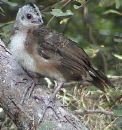
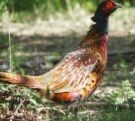
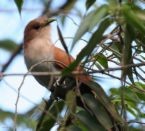


Last are the most annoying tropical jungle reptiles that call our area home:
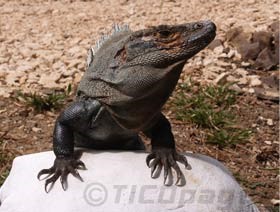
Black iguana
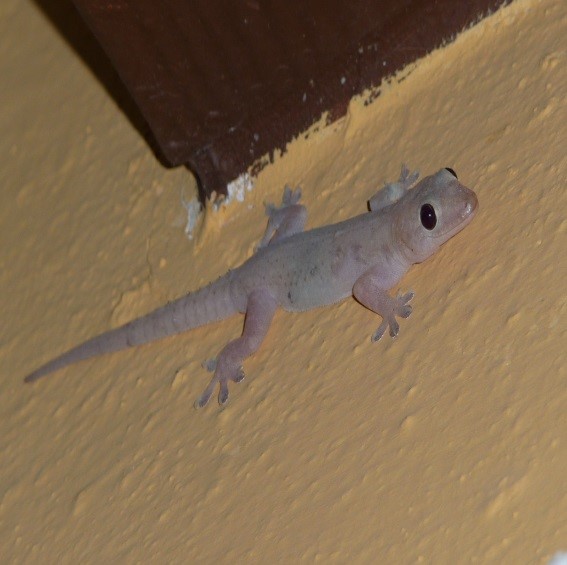
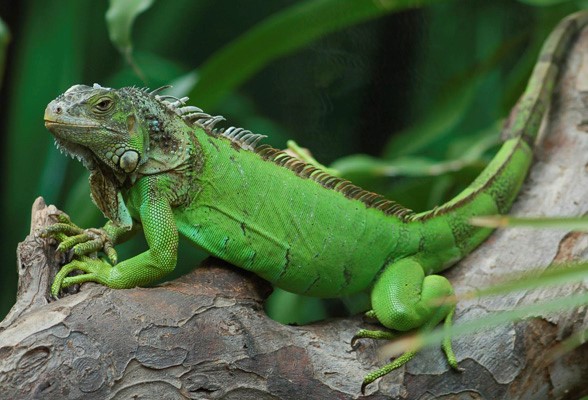
The magic of the Riviera Nayarit jungle, with all of its exotic wildlife diversity, is just another reason why visiting the area is a memorable experience.